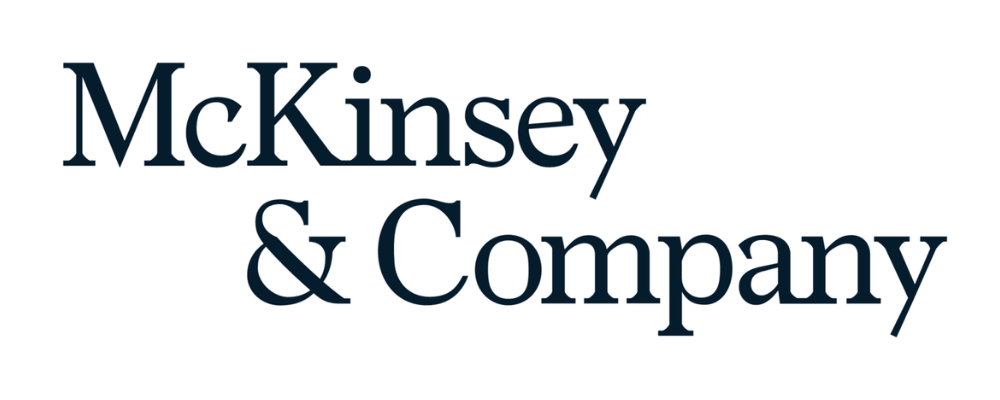
Since 2015, McKinsey, in partnership with LeanIn.Org, has conducted annual original research on women’s participation in the formal workforce in the United States and Canada through the Women in the Workplace report series. This report extends that pioneering research to new countries—India, Nigeria, and Kenya—for the first time, addressing a major data gap and deepening our understanding of women’s representation in the formal sector in these critical markets.
Our analysis in this report is based on data from 324 organizations, which together employ about 1.4 million people across India, Nigeria, and Kenya. This research revealed that across these countries, women are far from achieving parity in representation and face systemic challenges that prevent them from reaching leadership roles at scale. However, the challenges they face differ across countries, indicating an opportunity for these countries to learn from each other—such as how to attract more women into entry-level positions or how to remove women’s barriers to promotion into management and senior leadership roles.
Below, we explore women’s representation across formal sector pipelines in each country and in specific sectors, the policies and practices that are affecting gender diversity, how the organizations are tracking progress and holding leaders to account, and some steps that could accelerate progress.
Women’s representation in India is low at the entry level and drops sharply at the move up to manager before somewhat leveling out
Obstacles for women’s workforce representation in India emerge early, at the entry level, with low recruitment, high attrition, and limited promotions. While women represent 48 percent of enrolled university students in India, they make up just 33 percent of entry-level workers and 24 percent of managers. Beyond the manager level, the decline in representation slows substantially, decreasing by an average of two percentage points per level. Although challenges persist as women move up, the effects are not as stark as those faced at the very start of women’s careers.
At the entry level, there is also a seven-year age gap between women and men: Women average 39 years of age while men average 32. This significant difference suggests that many women either start their careers later or face career stagnation, remaining in entry-level roles longer before advancing.
Low entry-level representation for women in Nigeria limits their representation at subsequent levels of seniority, though they maintain steady representation as they become more senior
Barriers to entering formal employment in Nigeria create a shallow pool of women candidates early on. Once women enter the workforce, their representation holds relatively steady, with little to no drop after the manager level. Yet C-suite representation remains low. Until entry-level barriers can be addressed, the narrow pipeline at the start means senior roles are likely to remain weighted toward men. Senior-level women in Nigeria also see greater fluidity in their careers than men; our data indicated that women are more likely to be promoted, but our analysis shows they are also more likely to leave their current roles and be hired laterally at other organizations, whether deterred by frustrations with their current role or lured away by attractive opportunities elsewhere.
Women’s representation in Kenya follows a classic narrowing funnel in both the public and private sectors despite relatively high representation at the entry level
In Kenya, women start off relatively well-represented. However, as they move up to leadership roles, their representation declines. In the private sector, women encounter a “double dip” challenge: first, a broken rung hindering their progression into management, and then a second barrier to advancement into senior leadership roles. These dips diminish women’s representation in the talent pipeline, leaving the proportion of women in C-suite positions at only 28 percent. Meanwhile, in the public sector, women maintain stable representation at both entry and managerial levels, but their numbers decline as they climb the ladder.
Examining systemic barriers: Women’s representation trends across key sectors reveal divergence across the sectors and countries
Looking at three sectors reveals substantial differences in women’s representation patterns, indicating potential learnings that could be harnessed across sectors.
Financial services. The financial services sector across all three countries reveals a common trend of relatively high representation of women at entry levels but significant drop-offs at senior leadership. In India, women make up 31 percent at the entry level, but this decreases to just 13 percent in the C-suite. Nigeria and Kenya see even steeper drops, with 47 and 50 percent representation at the entry level in financial services and only 28 and 26 percent at senior levels, respectively. These findings suggest that systemic barriers prevent women from advancing, even in the financial services sector when there is strong representation early in the pipeline.
Healthcare. Similar, though not quite as steep, drop-offs also appear in the healthcare pipeline. Despite high initial representation, women’s representation drops after the early stages of the funnel. In Nigeria, women hold 51 percent of entry-level roles and 38 percent of senior-level roles. A similar pattern is seen in Kenya, with women holding 55 percent of entry-level roles and declining to 39 percent at the C-suite.
Legal. Across India, Nigeria, and Kenya, the legal sector stands out for having relatively high representation of women throughout the pipeline, consistently maintaining representation above the national average at every level. In Nigeria, women represent 55 percent of workers at the entry level, with only a slight decline to 49 percent at senior leadership. Similarly, in Kenya, women hold 59 percent of entry-level roles and 55 percent at senior leadership, indicating more stability in representation as they advance. In India, women make up 51 percent of the entry level, but this drops to 32 percent in the C-suite—a more significant decline than in the two other countries’ legal sectors.
Policies and practices are correlated with better outcomes in women’s representation, but successfully implementing them is critical
Many organizations have taken initial steps to address the underrepresentation of women in the workplace by implementing multiple policies and practices focused on gender diversity. Notably, organizations with the lowest representation of women are most likely to lack comprehensive gender diversity policies, underscoring a correlational link between adoption of certain policies—categorized as “differentiator policies”—and better gender outcomes. The varied gender-diversity outcomes across organizations suggest that the mere presence of gender diversity policies is not enough; how effectively these policies are implemented may explain the variability in outcomes, underscoring the importance of execution.
Some policies and practices appear to have a greater impact on advancing gender diversity than others
Differentiator policies, which are not prevalent today, are policies that positively correlate with higher levels of representation and advancement of women. Differentiator policies include mentorship and sponsorship programs, flexible work arrangements, and family and personal care policies such as paid sick days and menstrual leave. While we cannot establish a causal relationship between these policies and higher levels of women’s representation based on this methodology, these policies are associated with improved outcomes for women, with flexible work and family support associated with higher promotion rates for women, particularly in middle management.
When I had my baby, I faced a tough choice: stay in the workforce or quit to care for my child. Fortunately, I had a strong support system at home, and my employer offered a full year of remote work after my maternity leave. This flexibility was a game changer—it allowed me to continue my career while ensuring my young child received the care they needed.
HR executive at a real estate services company in India
Measures of progress and accountability mechanisms are lacking
While roughly three-quarters of companies say their CEOs prioritize gender diversity, only 58 percent of companies frequently track progress and outcomes, and just 15 percent hold their boards accountable for gender diversity outcomes. The lack of measurement and accountability is likely contributing to the lack of outcomes that companies aspire to deliver through their gender diversity policies and practices.
Organizations can address three bottlenecks to bridge the gap
Across the three countries, women experience three progress bottlenecks at varying degrees:
- India and Nigeria struggle with limited opportunities for women entering the workforce. To enhance their workforce participation, leaders could strengthen university recruitment initiatives, including career guidance sessions and industry–academia partnerships, and introduce internships that consider the barriers women face to help women transition to the workforce.
- All three countries, and particularly India and Kenya, could benefit from additional support for women’s advancement into management. Structured career acceleration pathways within companies could support equitable progress from entry to manager levels, as could expanded institutionalized flexible-work policies. Managers will need to be trained on how to fairly evaluate and support the promotion of those who make use of the policies.
- In India and Kenya, barriers prevent women from reaching senior leadership roles. Structured mentorship and sponsorship programs, enhanced flexible work policies, equitable performance evaluations, strengthened family support policies, and enriched pathways to public sector leadership for women are just a few actions leaders could consider to help women in these countries advance to the highest levels.
Three steps can help organizations accelerate progress
By following three sequential steps, employers can create and successfully implement policies that work to accelerate progress toward advancing gender equity:
- Diagnose. Only two-thirds of companies surveyed track gender inclusion metrics. To understand how to improve gender diversity, organizations need to pinpoint where issues lie in the pipeline and determine if the challenges are related to attraction, retention, or promotion at each level where representation is low or where there is a notable drop. This will allow organizations to craft targeted strategies for improvement and best use scarce resources to move the needle on women’s representation.
- Design. Leaders should find out what, if any, differentiator policies the organization has in place as well as the uptake and utilization patterns of the policies to determine if they are reaching the intended segments of employees and achieving their objectives. Once they understand this, leaders should consider additional policies they could put in place to address the identified challenges and close remaining gaps, then consider experimenting with approaches that are more innovative.
- Monitor. Policies alone do not create impact; their success relies on effective implementation and ongoing evaluation, but only 15 percent of boards have established accountability mechanisms that include gender diversity metrics. Employers need to treat gender diversity initiatives as a strategic priority just as they would any other business imperative, by actively tracking progress and holding leaders accountable.
“Our firm is designed to operate as one—a single global partnership united by a strong set of values. We are equally committed to both sides of our mission: attracting and developing a talented and diverse group of colleagues and helping our clients create meaningful and lasting change.
From the C-suite to the front line, we partner with clients to help them innovate more sustainably, achieve lasting gains in performance, and build workforces that will thrive for this generation and the next.”
Please visit the firm link to site


